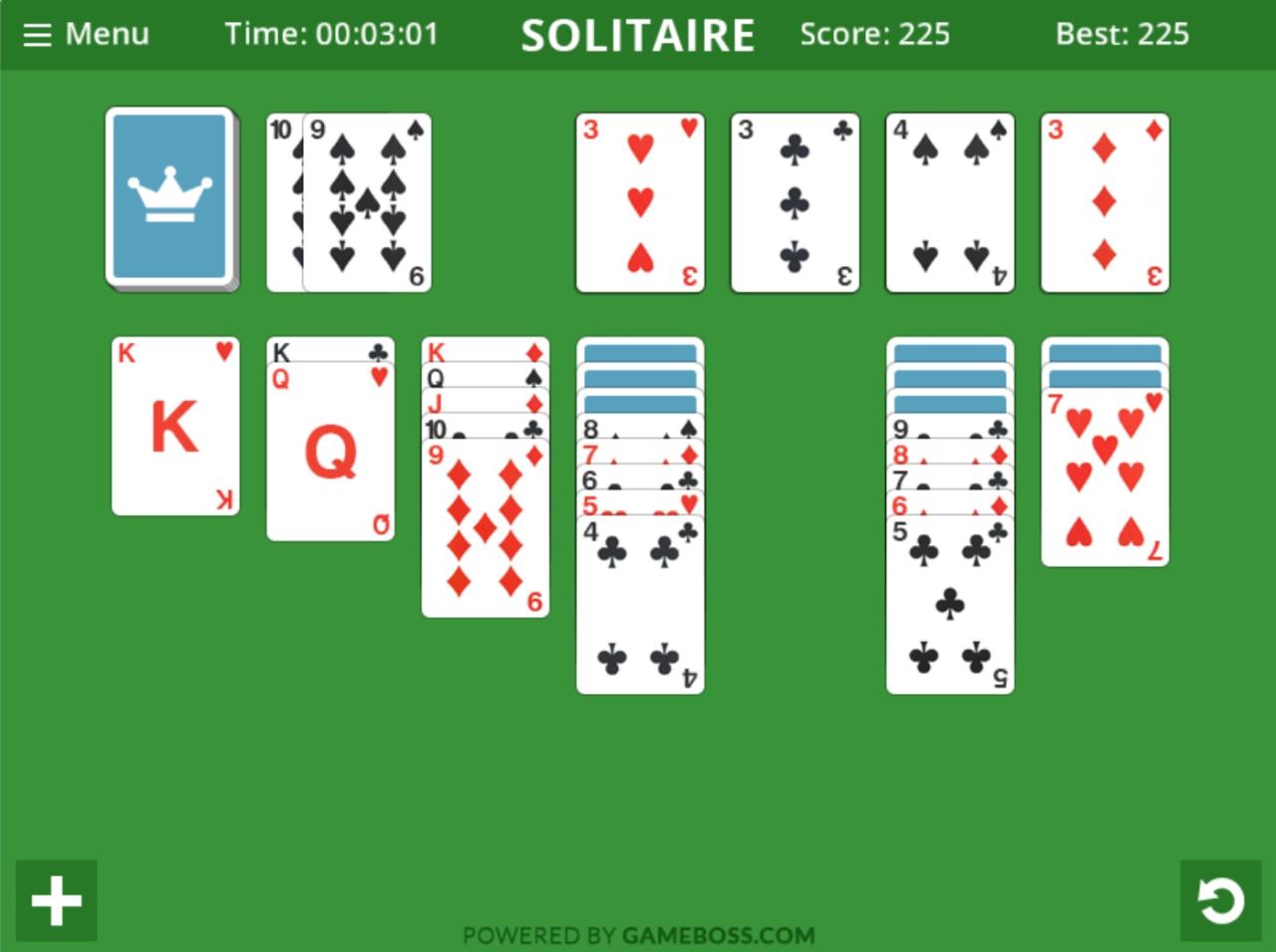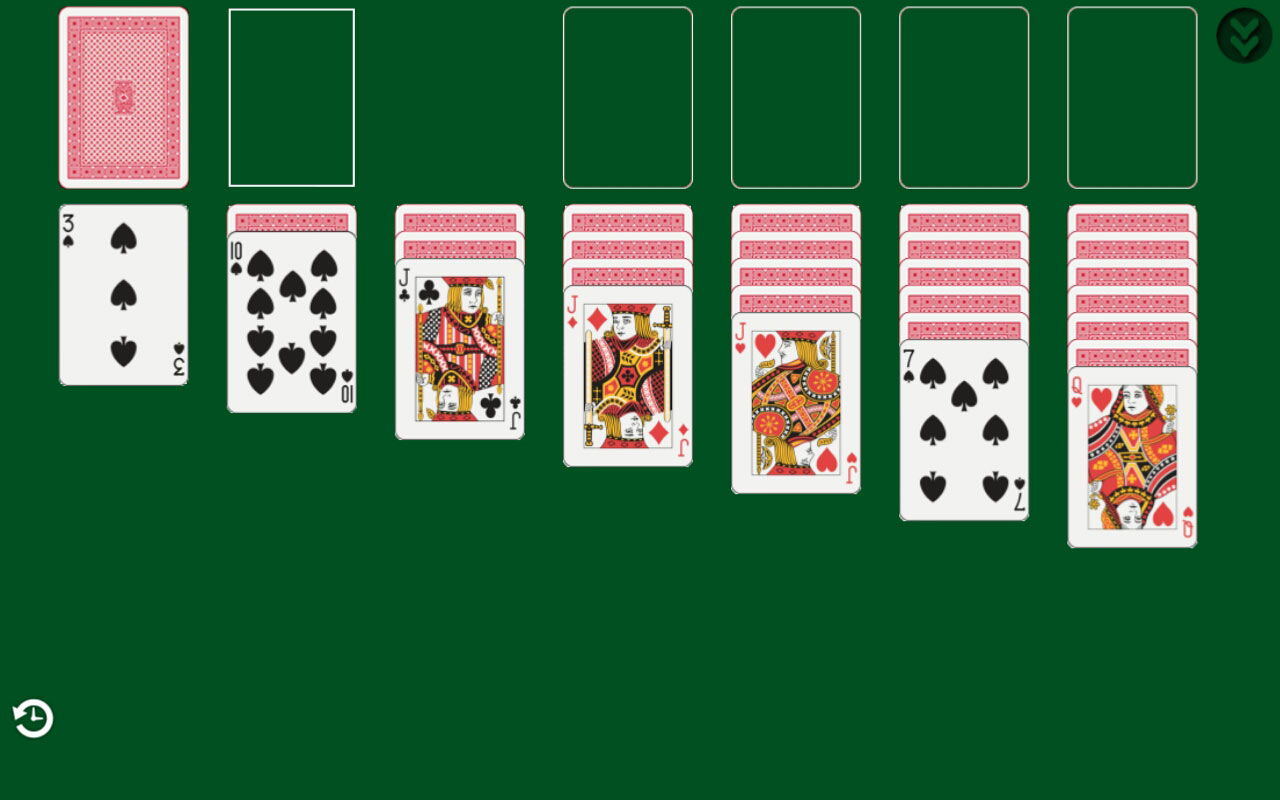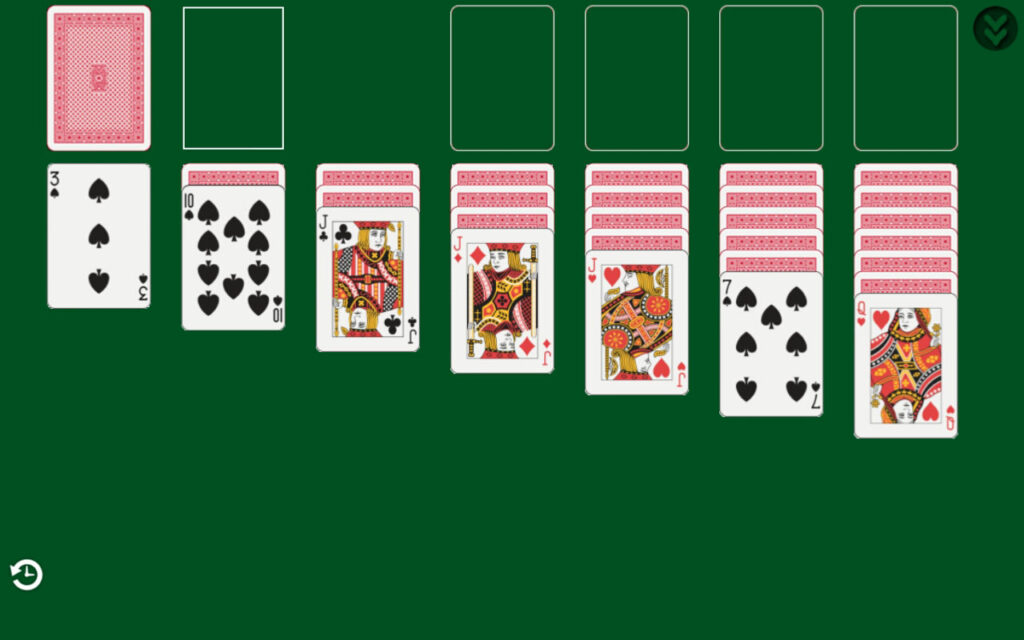Klondike Solitaire is a classic card game that combines strategy and patience, captivating players for generations. This beloved pastime not only challenges your strategic thinking but also offers a relaxing way to pass the time. Whether you’re new to the game or a seasoned player looking to sharpen your skills, understanding its mechanics and strategies is essential for success.
In this guide, we delve into the game mechanics of Klondike Solitaire, exploring its rules, objectives, and the significance of card arrangement. We will also discuss various gameplay modes that cater to different preferences, ensuring an engaging experience for everyone.
Game Mechanics of Klondike Solitaire

Klondike Solitaire is a classic card game that combines strategy, skill, and a bit of luck. The objective is to move all cards to four foundation piles, sorted by suit and in ascending order from Ace to King. Understanding the rules and gameplay strategies is essential for mastering this popular solitaire variant.
The game begins with a tableau of seven columns of cards, where only the top card is face-up. Players can draw cards from the stockpile to assist in their gameplay. Each move should be carefully considered as the arrangement of the tableau cards significantly impacts the ability to uncover and move additional cards. Keeping track of available moves and planning ahead are crucial to success in Klondike Solitaire.
Rules and Objectives
Players aim to transfer all cards to four foundation piles, organized by suit in ascending order. The tableau consists of seven columns, with the first column containing one card and each subsequent column increasing by one card, with only the top card face-up. The remaining cards form the stockpile, which players can draw from to obtain additional cards when needed. The primary rules include:
- Cards can only be moved to the foundation piles when they are in the correct order and suit.
- In the tableau, a card can be placed on another if it is one rank lower and of a different color (e.g., a red 5 can be placed on a black 6).
- When a tableau column is cleared, only a King can be placed in that empty space.
- Players can draw one or three cards from the stockpile, depending on their chosen game mode.
- Players can only move sequences of cards if the entire stack is of alternating colors and the bottom card is eligible for placement.
Importance of Card Arrangement
The arrangement of cards in Klondike Solitaire is pivotal in determining potential moves and strategies. Players must assess their tableau carefully, seeking opportunities to move cards to the foundation piles or rearranging tableau columns to uncover hidden cards. The following strategies highlight the importance of card arrangement:
- Prioritize uncovering face-down cards in the tableau, as this increases the number of available moves.
- Maintain a balance between moving cards to foundations and keeping tableau columns diverse to maximize future moves.
- Consider the order of cards in the tableau when moving cards sequentially, as incorrect placements can block potential moves.
- Utilize the stockpile wisely, drawing cards only when necessary to prevent unnecessary depletion of available moves.
Game Modes
Klondike Solitaire offers various game modes to enhance the gameplay experience. Each mode has its unique set of rules, affecting the difficulty level and overall strategy. Here are the primary game modes available:
- Draw One Card: Players draw one card from the stockpile, making it easier to access needed cards but also limiting the strategic complexity.
- Draw Three Cards: This mode allows players to draw three cards at a time, which can add a layer of challenge as players must navigate through more cards to find what they need.
- Vegas Mode: In this variation, players earn points based on the cards moved to foundations and can bet points at the beginning of each game, adding a gambling aspect to the classic format.
- Timed Mode: Players race against a clock, adding an element of urgency to the game and requiring quick thinking and swift moves.
Strategies for Winning Klondike Solitaire

Mastering Klondike Solitaire requires not only a bit of luck but also a solid strategy. Effective gameplay can significantly increase your chances of winning, transforming a simple card game into a rewarding challenge. While the rules may be straightforward, the tactics to optimize your moves can make all the difference in your success. Here, we explore some key strategies for maximizing your gameplay, alongside common pitfalls that players encounter.
Maximizing Moves
To enhance your chances of winning, it’s essential to focus on maximizing every move. Understanding which cards to move and when can lead to significant advantages. Here are some strategies that can help in making the most of your moves:
- Expose Face-Down Cards: Prioritize moves that allow you to flip over face-down cards. This action not only reveals new cards but also can help you clear the tableau, providing more options for future plays.
- Manage Your Tableau Wisely: Focus on creating empty tableau spaces as they can be filled with Kings, allowing for greater flexibility in card movement.
- Plan Ahead: Always think two or three moves ahead. Try to anticipate which cards will be helpful later in the game and hold back on moving cards that might block your strategies.
- Utilize the Stock Wisely: Be cautious when drawing from the stock. If you can make a move without drawing, it can help you maintain more control over the game.
Avoiding Common Mistakes
Even seasoned players can fall into traps that hinder their gameplay. Recognizing and avoiding these common mistakes can help enhance your winning rate. Here are some mistakes to be aware of:
- Moving Cards Prematurely: Avoid moving cards to foundation piles too hastily. Ensure that moving a card provides a broader benefit rather than just filling a space.
- Ignoring Potential Moves: Players often overlook possible moves that could lead to greater opportunities. Always assess all available options before making a decision.
- Focusing Solely on the Foundation: While building the foundation is important, neglecting the tableau can lead to missed opportunities for card movement.
- Overusing the Stock: Relying too heavily on the stock can lead to a lack of available moves. It’s often better to exhaust tableau options before drawing.
Beginner vs Advanced Strategies, Klondike solitaire
The transition from beginner to advanced strategies can significantly alter gameplay. Beginners often employ basic tactics, while advanced players use a repertoire of complex techniques. Understanding these differences can lead to improved performance.
- Beginners: Often focus on basic moves, such as moving cards to the foundation and flipping cards from the stock without strategic consideration. They may also struggle to recognize the importance of potential card sequences.
- Advanced Players: Utilize a comprehensive understanding of card sequences, tableau management, and stock usage. They prioritize clearing the tableau efficiently and often work to manipulate the layout to their advantage.
“Effective card management is key; every move should be strategic and calculated.”
By integrating these strategies and avoiding common mistakes, players can elevate their Klondike Solitaire game from casual play to a more strategic and rewarding experience.
History and Evolution of Klondike Solitaire

The origins of Klondike Solitaire can be traced back to the late 19th century, a time when card games were a popular pastime. The game gained significant traction during the Klondike Gold Rush in the 1890s, where it became a favorite among gold miners seeking leisurely activities during their downtime. Over the years, Klondike Solitaire has evolved and adapted, giving rise to various versions and digital adaptations that continue to engage players worldwide.
The rise of Klondike Solitaire’s popularity is closely associated with its accessibility and straightforward gameplay. Initially played with a standard deck of cards, the game allows players to strategize while enjoying a relaxing experience. Its appeal was magnified with the advent of personal computers, which facilitated the game’s transition into the digital realm. As more people began to embrace technology, Klondike became a staple on computer operating systems, most notably Microsoft Windows.
Variations and Adaptations of Klondike Solitaire
Klondike Solitaire has experienced numerous variations and adaptations since its inception. These modifications have introduced different rules and gameplay styles, which cater to diverse player preferences. Notable variations include:
- Traditional Klondike: The classic version where players build four foundation piles by suit, starting from Ace to King.
- Draw Three: A more challenging adaptation where three cards are drawn from the stockpile at a time instead of one, increasing the complexity of the game.
- Vegas Style: A version that incorporates a betting element, where players earn points based on the moves they make and the cards they successfully move to foundations.
- Relaxed Gameplay: Variants that allow for more flexible rules, such as unlimited redeals of the stockpile or the ability to move multiple cards at once.
These variations have contributed to the game’s longevity and continued appeal, ensuring that both casual and dedicated players find a version that suits their play style.
Milestones in the Development of Digital Versions of Klondike Solitaire
The transition from physical cards to digital formats marked a significant milestone in the evolution of Klondike Solitaire. The following are key developments that have shaped the digital landscape of the game:
- First Digital Version (1989): The first computer adaptation of Klondike was included in the game collection of the Microsoft Windows 3.0 operating system, introducing the game to a vast audience.
- Mobile Revolution (2000s): With the rise of smartphones, Klondike Solitaire found its way into mobile applications, allowing players to enjoy the game on-the-go. This accessibility further increased its popularity.
- Online Platforms (2010s): Various online platforms began offering multiplayer options and social features, allowing players to compete against friends or strangers, enhancing the game’s interactivity.
- Enhanced Graphics and User Experience: Modern digital versions feature improved graphics, animations, and customizable interfaces, making the game more visually appealing and user-friendly.
These milestones demonstrate how Klondike Solitaire has adapted to technological advancements, ensuring its place in the hearts of card game enthusiasts across generations.

